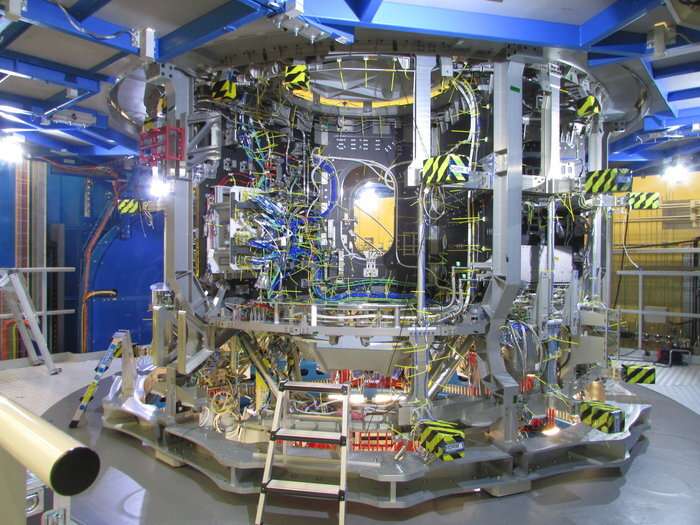Image: European Service Module 2 assembly

The European Service Module-2 (ESM-2) is somewhat like the portal it appears to be in this image. By providing power and propulsion for the Orion spacecraft, it will transport humans back to the Moon, roughly fifty years after humankind first landed on its surface.
In assembly at Airbus in Bremen, ESM-2 is the engine of the Orion spacecraft that will fly its second mission and first with a crew. The mission is called Artemis 2 and is set for launch in 2022.
Every wire seen in this structure must be correctly connected and configured to ensure the systems providing power, propulsion, oxygen and heat get the spacecraft and its crew of four safely around the Moon and back.
Partially visible at the bottom of the Service Module are the auxiliary thrusters that have recently been installed. These along with two other types of engines will get Orion to its destination.
The main engine is a repurposed Space Shuttle Orbital Maneuvering System engine that has flown in space before. The eight auxiliary thrusters come in as backup to this main engine and to provide orbit corrections.
Lastly, 24 smaller engines grouped into six pods provide attitude control. In fixed positions, they can be fired individually as needed to move the spacecraft in different directions and rotate it into any position.
ESM-2 is expected to be completed and delivered to NASA in 2020.
The first European Service Module arrived at Kennedy Space Center in Florida in October 2018. It has since been mated with the Crew Module Adapter and Crew Module. The trio are undergoing thermal and balance testing at NASA's Plum Brook Facility in Ohio this summer.
The recent successful Launch Abort Test that proved the spacecraft's system can pull astronauts to safety in the event of a launch anomaly has marked another major milestone for Orion's first exploratory mission.
Artemis 1 will qualify the spacecraft's performance. Orion will make a flyby of the Moon, using lunar gravity to gain speed and propel itself 70 000 km beyond the Moon, almost half a million km from Earth—farther than any human has ever traveled.
On its return journey, Orion will do another flyby of the Moon before heading back to Earth.
The total trip will take around 20 days, ending with a splashdown in the Pacific Ocean without the European Service Module—it separates and burns up harmlessly in the atmosphere.
Artemis 2 will follow a similar flight path with a crew of four astronauts.
The European Service Module is built by Airbus, with smaller components coming from suppliers all over Europe, making the mission a truly international endeavor.
Orion is the first collaboration between ESA and NASA on a spacecraft that will take humans farther into space.
In addition to returning humans to the moon, Orion will be instrumental to building the Gateway, a staging post to be located in lunar orbit that will allow humans to go deeper into space.
Provided by European Space Agency




















